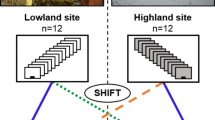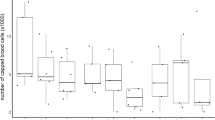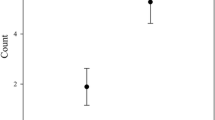Summary.
Little is known about the development of the overwintering population of honey bees (Apis mellifera) colonies in temperate climates. Colonies were subjected to one of four requeening treatments: requeened in mid-summer with a mated, virgin or colony-reared queen, or left with the original queen (control). Worker survival in cohorts of newly emerged bees introduced to colonies in late summer and fall was followed until all marked bees had died. Winter bees were reared over a relatively similar length of time in all treatments, but they appeared earlier in control colonies compared to requeened colonies. The gradual increase in proportion of winter bees over time was similar among treatments, but requeened colonies lagged behind control colonies. The bulk of winter bees appeared much earlier in control colonies than in colonies that were requeened. This response demonstrates that cues within the colony (i.e., differences due to requeening) are perceived by workers as part of the conditions that influence summer bee or winter bee status.
Similar content being viewed by others
Author information
Authors and Affiliations
Additional information
Received 17 July 2000; revised 26 December 2000; accepted 4 January 2001
Rights and permissions
About this article
Cite this article
Mattila, H., Harris, J. & Otis, G. Timing of production of winter bees in honey bee (Apis mellifera) colonies. Insectes soc. 48, 88–93 (2001). https://doi.org/10.1007/PL00001764
Issue Date:
DOI: https://doi.org/10.1007/PL00001764




